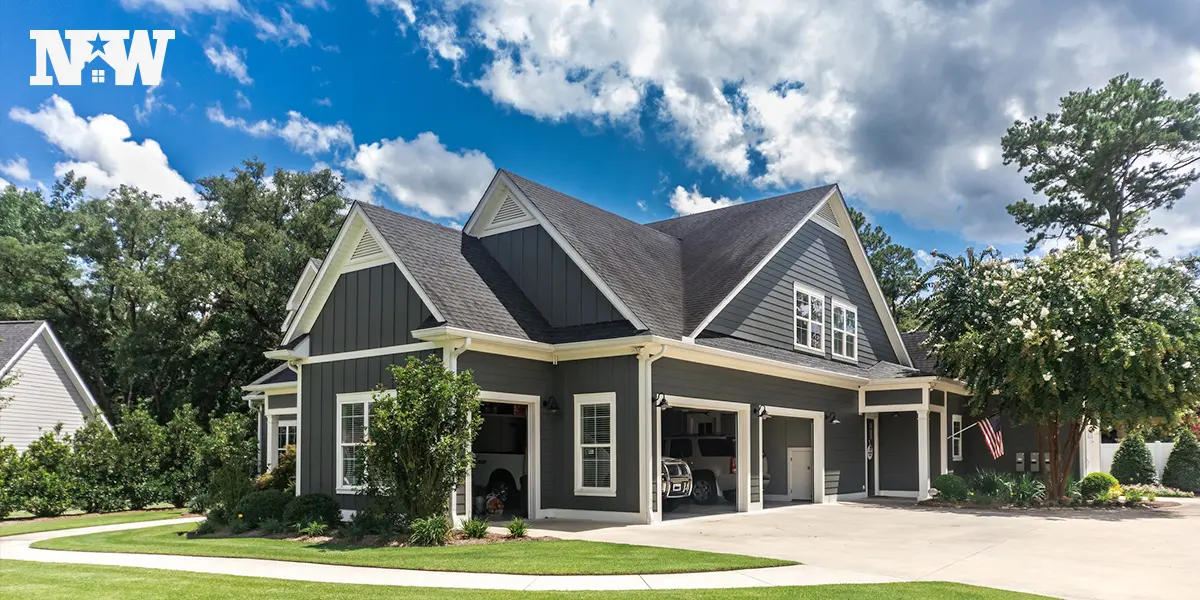New Western’s Monthly Market Snapshot – October Edition
Key Takeaways
Three key factors have the highest potential to create movement in the current housing market.
- Emerging rental markets could signal opportunities for investors.
- New construction is building more condos leaving an opening for single-family investors.
- No matter who wins the election, the solution to the affordability crisis is local investors.
Landlords and Rental Prices
Rent has remained fairly stable over the last two years. The median rent across all bedroom sizes was down 0.2% month-over-month. This was the second slight decline during the past three months. Overall, rent remains historically high, up 0.6% from a year ago.
For investors looking to tap into opportunities, the East and Midwest are experiencing the most demand and higher asking rents compared to the South. Washington D.C. experienced the highest annual rent increase and Jacksonville, FL had the biggest decrease.
Five major metros where rents rose the most:
Washington D.C. 12.0% ↑
Virginia Beach, VA 11.3% ↑
Baltimore, MD 11.1% ↑
Cleveland, OH 10.6% ↑
Chicago, IL 9.1% ↑Five major metros with the biggest drops in asking rents:
Jacksonville, FL 11.3% ↓
Raleigh, NC 10.6% ↓
San Diego, CA 10.4% ↓
Austin, TX 9.9% ↓
Tampa, FL 7.7% ↓
Either way, investors who track rental rate shifts can price their rentals competitively to gain an edge in any city.
New Construction
Builder confidence was down at the end of summer 2024 but began to rise in September, and went up again in October. Builders were motivated by the potential for buyers to jump back into the market following Fed rate cuts. As of October, single-family construction is up 10% on a year-to-date basis and builders are preparing to increase inventory in 2025.
Even though the demand for housing remains high, affordability is still a top challenge for many home buyers. To solve this issue, builders are leaning into constructing higher-density condos and townhomes versus detached single-family homes which cost more to build.
What hamstrings new construction actually signals an opportunity for local investors. Zoning and planning restrictions combined with a lack of buildable land keep builders from constructing enough affordable detached single-family homes to meet demand. On the flip side, investors have a ready-made product to flip and sell to buyers looking for affordable homes in existing and desirable neighborhoods.
Investors looking for markets with potential demand for newly renovated homes could consider the top 10 metros with the most single-family permit activity growth in 2024.
- Indianapolis
- Phoenix
- San Diego
- San Antonio
- Milwaukee
- Chicago
- Louisville
- Las Vegas
- Dallas
- Minneapolis
Home Sales and Inventory
Existing home sales took a 1% dip from August to September 2024 and were down 3.5% from a year ago. The inventory of unsold homes rose from 4.2 months of supply in August to 4.3 months of supply in September. By comparison, inventory sat at 3.4 months of supply in September 2023.
The National Association of Realtors speculates that even with more inventory, some buyers are waiting until after the election to make a purchase. With home prices up 3% from a year ago, it’s possible that consumers are hoping for big changes post-election.
Metros with the biggest increase in home prices in September were in Philadelphia (1.6%↑) and Virginia Beach, VA (1.4%↑)
And metros with the largest decline in home prices in September were San Antonio, TX (1%↓) and Fort Lauderdale, FL (0.9%↓).
Campaign Policies
The countdown to the election on November 5th is on and the housing market remains a hot topic for candidates and voters alike.
When it comes to which candidate homeowners and renters would support in the presidential election, housing affordability came in at number four as a top priority. The top three being the economy, inflation and health care, according to a Redfin survey.
But will the government have a solution that solves the affordable inventory crisis?
The challenge with current housing policies is that they focus on increasing supply without addressing the underlying causes of the inventory crisis.
“Harris’ housing policies are crafted to appeal to voters, but their effectiveness in addressing the housing supply crisis is questionable. The $25,000 down payment assistance program, while well-intentioned, risks further inflating demand in an already constrained market, driving up home prices, and exacerbating the shortage of affordable homes. The $40 billion innovation fund, intended to reform zoning and regulatory frameworks, may overwhelm local governments that lack the capacity or infrastructure to implement meaningful changes.”
Kurt Carlton, Co-Founder and President, New Western
“Trump has yet to outline specific housing policies in the detailed manner that Harris has, leaving uncertainty around his approach. However, he has indicated a broad focus on restoring economic stability, with the goal of moderating mortgage rates, alleviating supply chain disruptions, and reducing high construction costs caused by excessive regulations. Additionally, he proposes utilizing federal land for new housing developments. In our view, tapping federal land is not the priority. The U.S. already has approximately 15 million vacant homes, many located in areas where housing is desperately needed. Rehabilitating existing housing stock should be the central focus of any housing policy aimed at addressing the current crisis.”
Kurt Carlton, Co-Founder and President, New Western
While the government takes time to create policies, local investors will continue to rehab properties in their neighborhoods and add to the housing inventory.
Get to Know a New Western Investor Market – Chicago, IL
Ready to take part in the Great Renovation? Chicago is a rapidly growing New Western market with a wide variety of neighborhoods connected by public transportation and is a major airport hub that continues to make the city a viable place for investors looking for buy-and-hold and rehab-and-sell options.
Chicago has a robust rental population where over 50% of residents are renters. Chicago’s economy is diverse and not reliant on a single industry to draw in residents looking for student housing and luxury condos.







